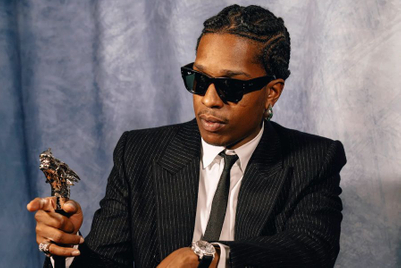
For obvious reasons, marketers often compare the Indian luxury market to the Chinese one. Like China, India has both a fast-growing elite class and an aspirational class — and their insatiable appetite for luxury reminds global brands of China.
In 2019, India had 4,593 ultra-high-net-worth individuals, coming in fourth after the US, China, and Germany, according to a Credit Suisse Global Wealth Report. India had around 912,000 millionaires, who represent 2 percent of the 51.9 million millionaires globally. Of even greater importance, The Centre for Economic and Business Research (CEBR) forecasts that India will overtake the UK to become the fifth-largest economy in 2025 and the world’s third-largest economy by 2030.
With one of the largest populations of millionaires in the region and a strong middle-class, India is now providing exceptional opportunities for luxury brands, and these positive developments had impacted luxury consumption.
The size of the luxury market in India is estimated to surpass $200 billion by 2030, according to India Retailing. And as India becomes a global luxury hotpot, international brands are becoming increasingly bullish on expanding their footprint in the country and boosting their brand awareness. But in one of the world’s largest and most populous nations, brands simply must pay attention to consumer behavior.
Consumer trends and behaviors differ across regions, cities, and social groups, so employing a “one-size-fits-all” approach won’t work. While Delhi and Mumbai continue to have the highest number of millionaire households, high taxes and the COVID-19 pandemic might shift this trend. Moreover, even in these cities, consumer behavior is not linear, and the young, spendthrift millennial cohort doesn’t have the same consumption habits as older generations.
Against this backdrop, India appears to have similar luxury consumption behaviors as China and Japan did in the past. And if consumer behavior is a sign of things to come, luxury brands should wonder if the age of signaling status and displaying logos will soon end in India.
Abhay Gupta, founder & CEO of Luxury Connect, told Mint that Indian shoppers will become more “conscious of quality” when buying apparel post-pandemic. Gupta compares the shift in consumer behavior to the one seen in China, and he highlights that “logo-wear and ostentatious things” will be replaced with a more “demure, classic and refined trend.”
According to Gupta, the fall in disposable income will also push consumers to think harder about “what they want to buy.” Buying versatile investment pieces instead of fashionable clothes is a smart move, especially during an economic downturn.
Former managing director & CEO of Mercedes-Benz India, Roland Folger, brings up an interesting point, saying that HNWIs with personal wealth of over $10 million can “have fleets of luxury cars” but prefer to drive seven-year-old Toyota Corollas because of taxation fears. He also emphasizes the cultural aspect that brings India closer to China than the materialistic West.
“There is something in India that makes people uncomfortable about displaying their wealth,” Folger told Business Today. “There is less of a materialistic and more spiritual outlook in India that makes it different from a country like the US. But it also has a more socialist-political background that makes the rich very careful about how they show their wealth outside.”
The rise of subtle, discreet luxury doesn’t manifest equally in all consumer groups. And luxury consumption trends in India will continue to be influenced by the 440 million millennials whose purchasing habits are still in their early stages.
The shift towards more expansive brands is already on the way, while the premiumization of the market is likely to push discreet luxury to the forefront. This shift will also enhance competitiveness and bring domestic players to the fore. Global brands might need to pick up the pace if they want to thrive in a country that is a world-renowned authority in textile production methods and embroidery styles. Affluent consumers already turn to Indian designers for wedding and festive wear, and Kama Ayurveda and Forest Essentials are slowly conquering the premium skincare segment.

In fact, the shift from logo brands to unbranded goods is already on the way in India’s elite circles. These shoppers are highly-educated and highly-connected global citizens, so they understand the true meaning of quality and craftsmanship. Conquering this segment means making innovative investments in personalization and customization efforts rather than displaying prominent logos like before.
When eyeing India, luxury brands could copy some valuable points from their China playbook because the market has shown the same signs of maturity as China did years ago.



.jpg&h=334&w=500&q=100&v=20250320&c=1)
.jpg&h=334&w=500&q=100&v=20250320&c=1)
.jpg&h=334&w=500&q=100&v=20250320&c=1)




.png&h=334&w=500&q=100&v=20250320&c=1)

.png&h=334&w=500&q=100&v=20250320&c=1)



.jpg&h=268&w=401&q=100&v=20250320&c=1)


.png&h=268&w=401&q=100&v=20250320&c=1)
